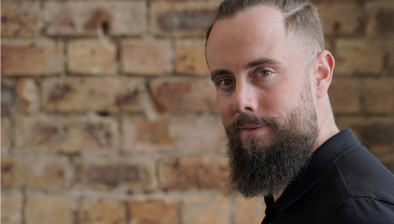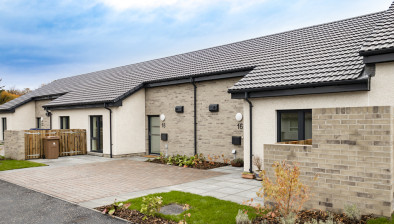Black’s Blog: Stigma within social housing in Scotland

After sitting down with Places For People Scotland’s managing director Tom Norris for the Scottish Housing News Podcast to discuss the stigmas that still surround social housing in Scotland, Jimmy Black reveals how his experiences have shaped his outlook to this day.
Snobbery in your social circle is never a pleasant discovery, and we’re “a Jock Tamson’s bairns” as every Scot should know. It should be reassuring that 96% of people would have no qualms about making friends with someone from a social housing estate, but somehow I find it hard to believe.
The figures come from a survey commissioned by Places for People Scotland (PFPS) about stigma and social housing, which found that 40% think that there is more crime on social housing estates, and 32% believe the quality of social housing is poor.
The survey correctly identifies some old fashioned perceptions, but an unintended consequence of just asking questions about social housing is to reinforce the stigma. Here I am writing about it with a whole host of negative language and memories of conversations in my head, personal experiences and probably prejudices as well.
In the 1980s I lived in Muirhouse Green in Edinburgh, a totally run down, neglected council scheme where the heating was a coal fire. There was a drug dealer on the floor below and huge steel doors on the empty flats. The repairs service was unenthusiastic to say the least. I’ve never been able to erase that from my memory; and the many people who later came to me as a Dundee councillor with seriously and unnecessarily damp homes also stick in the mind.
I’m a parent. I never discouraged my kids from making friends with people from social housing. But I sometimes wonder if anyone discouraged friendships with my kids because of the area I now live near, and the quite unjustified perception of it. It’s a mix of social, privately rented and privately owned housing in an area which has been stigmatised for decades, possibly more than a century. Actually, the stigma here is tenure neutral.
Social housing had a quality problem, and some of it still has. In England, a 23-year-old activist from the Eastfields estate in London has been making waves and fighting for better conditions for social housing tenants. His name is Kwajo Tweneboa and he lived in a flat described as having no ceiling in the main room, mould, asbestos, a rat infestation, and water pouring through electrical fittings. His landlord was a housing association.
Here, Shelter has been campaigning on the quality of temporary accommodation let to homeless people. There is still plenty of work to do before we can confidently say that the standard of social housing is uniformly adequate. But we can point to some examples of excellence for others to follow.
Places For People Scotland’s managing director, Tom Norris, was our guest on the Scottish Housing News Podcast, and he talks up the really high quality new build developments going up all over Scotland. He says that in PFPS’ best developments, you would not know whether the houses are socially or privately rented, or owner occupied. We should not talk about ‘social’ housing, we should just talk about ‘homes’.
Tom says the Engine Yard at the top of Leith Walk is a fantastic development, a flagship which combines social rent and private sales, older people and NHT houses, and you cannot tell the difference. No stigma living there.
Perhaps the perception that social housing is inferior to home ownership partly comes from Mrs Thatcher’s drive towards a property owning democracy, when social tenants were encouraged to buy their homes. It seems Boris Johnson plans to continue that tradition, in England, at least. Tom says he is personally proud to rent a property, and he chose to do so.
In the podcast we rehearse a number of stigmatising phrases used in the media such as “sprawling council estates”, “drug infested”, “crime ridden”, and Tom’s view is that we have to educate the media away from these terms.
We also discuss attitudes which may be held by some of those who design and manage social rented housing. The debate about putting floorcovering into relets rages on. For example, Kate Roberts from IFF Research told a recent Housing Quality Network Conference that “as a new tenant moving into a property that is completely unfurnished, bare floors, depressing Magnolia paint slapped onto walls, no white goods, no curtains etc., it isn’t hard to imagine how undervalued some of them may feel”.
The best thing about my old flat in Muirhouse Green was the thermoplastic tiling on every floor. It was in a big mess but it came up beautifully after a day or two spent with a polishing cloth. Over time I added rugs and the odd carpet, but at least I had a floor when I moved in.
All episodes of the Scottish Housing News Podcast are available here.








